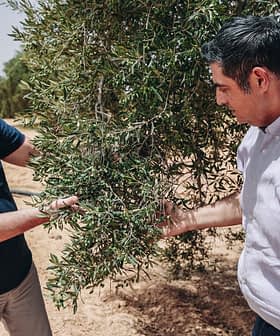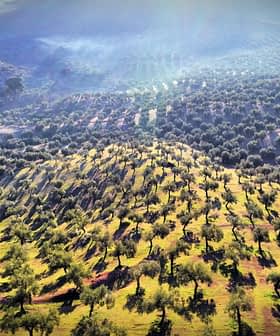Spanish Officials Determined to Investigate Price Decreases
In spite of poor harvests around most of the Mediterranean basin and a good one in Spain, olive oil prices continue to fall. Producers and their allies are demanding an investigation.
Although global olive oil production levels have dropped compared with last year, Spain’s decreasing olive oil prices are worrying local officials.
“The big concern we have is these prices,” Francisco Reyes, the president of Jaén’s Provincial Olive Oil Council, told Europa Press. “The [global] oil harvest dropped by seven percent compared to the previous year and it is not logical that prices are in the where they are.”
The situation is unsustainable… That is why we insist on the need to put in place all the necessary measures to deal with this crisis.
Agricultural organizations are demanding exceptional measures be taken in order to put an end to the ongoing economic loss, and are asking the competitive authorities to open an investigation.
According to official data from Poolred and Infaoliva, olive oil producers received an average of €2.38 ($2.70) per liter in February, compared to €3.40 ($3.86) per liter in the same month of last year, a 30 percent decrease.
See Also:Olive Oil PricesIn May 2017 the average price per liter was €4.00 ($4.54), the highest recorded in the past years, and a staggering 50 percent decrease in comparison to the current price.
With the country producing an overall high-quality harvest, the producers have stressed that the situation is particularly “odd” since the campaign should be a positive one that works in their interest. At the end of the campaign, production numbers are expected to be close to 1.8 million tons.
The somewhat veiled critiques of the producers have mainly been aimed at the industrial and bottling sectors, which process and refine their products for subsequent marketing, and not so much towards supermarkets where prices have only slightly decreased.
Currently in supermarkets, the prices for olive oils with private labels ranges from €3.00 ($3.41) and €3.70 ($4.20) per liter.
Meanwhile, the industrial and bottling sectors have rejected these accusations, highlighting that exports to other countries with low harvests have not been as successful as expected. Furthermore, the surplus has not been absorbed as producers had hoped, with olive oil consumption at the national level being around half a million tons.
In Andalusia, where 80 percent of all the Spanish olive oil is produced, the agricultural organizations Asaja, COAG and UPA have publicly advocated for the government to make a request to Brussels to activate the private storage system. The private storage system, last activated in 2012, is a mechanism that provides European aid to temporarily remove the product from the market to recuperate the prices.
“The situation is unsustainable,” COAG said in a statement on its website. “We cannot maintain these prices when we have such a large differential with the rest of the countries. That is why we insist on the need to put in place all the necessary measures to deal with this crisis.”
“COAG has already made proposals to try to reverse the situation by intervening in the market, and has petitioned to the European Commission to activate private storage,” the statement added.
However, European regulation requires that the price in the market be less than €1.52 ($1.73) for the lampante category, €1.71 ($1.94) for the virgin oils and €1.78 ($2.02) for the extra virgin oils during the “a representative period,” none of which apply in this case.
Sources from the aforementioned organizations have warned that it has been more than a decade since the referenced prices have been updated and that the private storage system can be activated “when the sector registers grave economic loss.”
The producers stated that they have already encountered great loss with the cost of production for the extra virgin oil, which is around €2.80 ($3.18).
The Minister of Agriculture, Fisheries and Food, Luis Planas, has recognized that there is “a strange behavior” being seen in the market and ensured that the necessary measures will be adapted to solve the problem.








